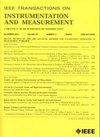基于激光雷达反射率的智能车辆路面摩擦估计
IF 5.6
2区 工程技术
Q1 ENGINEERING, ELECTRICAL & ELECTRONIC
IEEE Transactions on Instrumentation and Measurement
Pub Date : 2025-06-26
DOI:10.1109/TIM.2025.3583367
引用次数: 0
摘要
路面摩擦系数是自动驾驶系统决策和控制策略的关键因素。该研究提出了一种利用光探测和测距(LiDAR)点云数据估计路面摩擦系数的突破性方法,增强了自动驾驶汽车的前瞻性和高精度感知。来自八种道路类型的数据形成了一个强大的数据集。布模拟滤波(CSF)和随机样本一致性(RANSAC)算法准确地提取了道路点云。然后高斯滤波去除反射率异常值。考虑到反射率、距离和入射角之间的相关性,对路面进行分割,进行综合特征提取。设计的深度神经网络(DNN)模型经过数据集的严格训练,实现了道路识别。利用道路材料的统计知识和峰值摩擦系数确定了道路的摩擦系数。验证表明,该算法识别道路类型的准确率超过99.62%,每周期55毫秒。这确保了对峰值摩擦系数的实时、高精度估计,这是自动驾驶系统的一大推动力。本文章由计算机程序翻译,如有差异,请以英文原文为准。
Road Surface Friction Estimation Based on LiDAR Reflectivity for Intelligent Vehicle
The road surface friction coefficient is a key factor in the decision-making and control strategies of autonomous driving systems. This study presents a groundbreaking method for estimating the road surface friction coefficient using light detection and ranging (LiDAR) point cloud data, enhancing autonomous vehicles’ prospective and high-precision perception. Data from eight road types formed a robust dataset. Cloth simulation filtering (CSF) and the random sample consensus (RANSAC) algorithm extracted road point clouds accurately. Gaussian filtering then removed reflectivity outliers. Given the correlation among reflectivity, distance, and incident angle, the road surface was segmented for comprehensive feature extraction. A designed deep neural network (DNN) model, trained rigorously with the dataset, achieved road recognition. Using statistical knowledge of road materials and peak friction coefficients determined the road’s friction coefficient. Validation showed the algorithm identifies road types with over 99.62% accuracy, at 55 ms per cycle. This ensures real-time, high-precision estimation of the peak friction coefficient, a major boost for autonomous driving systems.
求助全文
通过发布文献求助,成功后即可免费获取论文全文。
去求助
来源期刊

IEEE Transactions on Instrumentation and Measurement
工程技术-工程:电子与电气
CiteScore
9.00
自引率
23.20%
发文量
1294
审稿时长
3.9 months
期刊介绍:
Papers are sought that address innovative solutions to the development and use of electrical and electronic instruments and equipment to measure, monitor and/or record physical phenomena for the purpose of advancing measurement science, methods, functionality and applications. The scope of these papers may encompass: (1) theory, methodology, and practice of measurement; (2) design, development and evaluation of instrumentation and measurement systems and components used in generating, acquiring, conditioning and processing signals; (3) analysis, representation, display, and preservation of the information obtained from a set of measurements; and (4) scientific and technical support to establishment and maintenance of technical standards in the field of Instrumentation and Measurement.
 求助内容:
求助内容: 应助结果提醒方式:
应助结果提醒方式:


